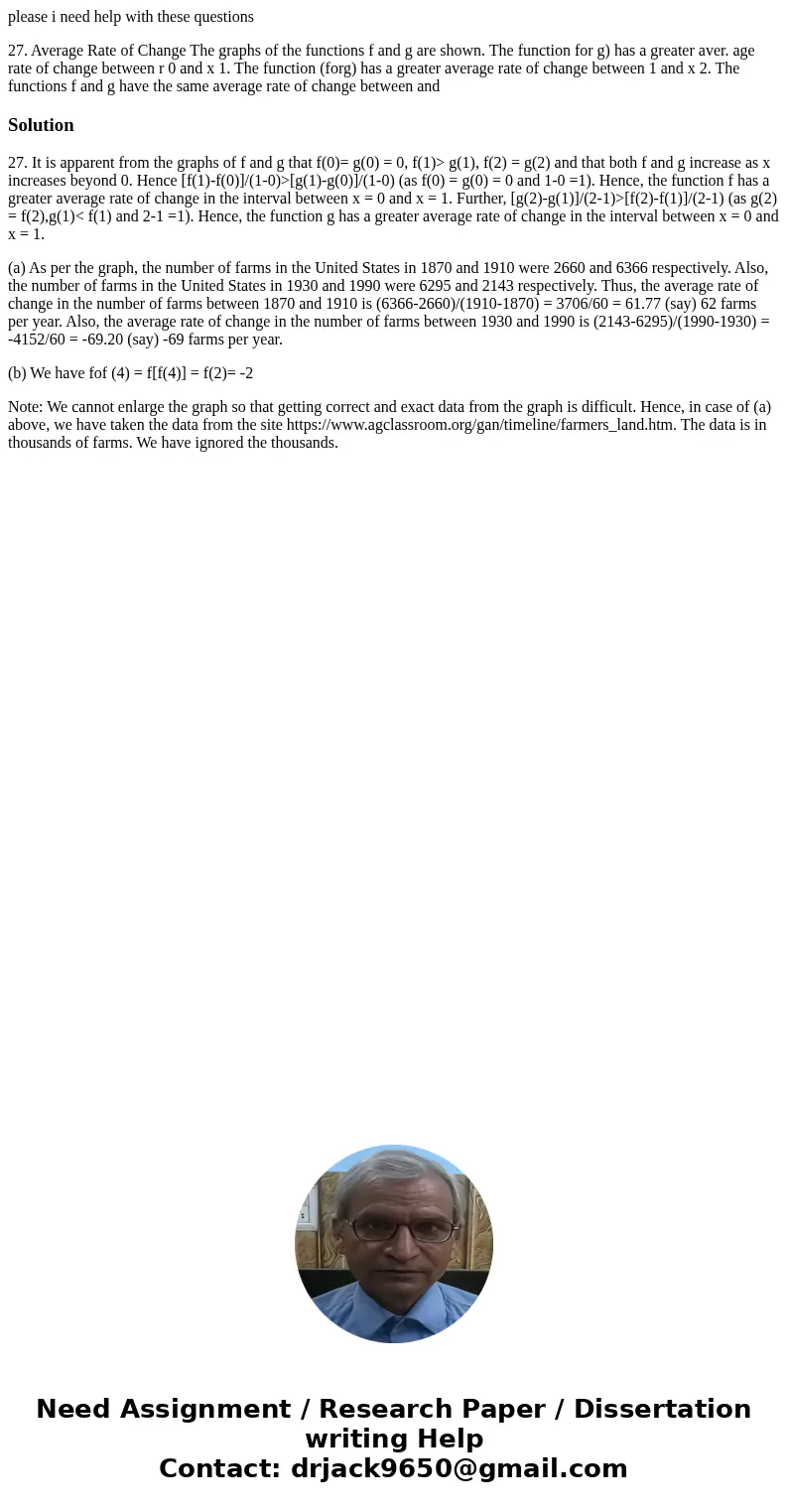please i need help with these questions 27 Average Rate of C
please i need help with these questions
27. Average Rate of Change The graphs of the functions f and g are shown. The function for g) has a greater aver. age rate of change between r 0 and x 1. The function (forg) has a greater average rate of change between 1 and x 2. The functions f and g have the same average rate of change between andSolution
27. It is apparent from the graphs of f and g that f(0)= g(0) = 0, f(1)> g(1), f(2) = g(2) and that both f and g increase as x increases beyond 0. Hence [f(1)-f(0)]/(1-0)>[g(1)-g(0)]/(1-0) (as f(0) = g(0) = 0 and 1-0 =1). Hence, the function f has a greater average rate of change in the interval between x = 0 and x = 1. Further, [g(2)-g(1)]/(2-1)>[f(2)-f(1)]/(2-1) (as g(2) = f(2),g(1)< f(1) and 2-1 =1). Hence, the function g has a greater average rate of change in the interval between x = 0 and x = 1.
(a) As per the graph, the number of farms in the United States in 1870 and 1910 were 2660 and 6366 respectively. Also, the number of farms in the United States in 1930 and 1990 were 6295 and 2143 respectively. Thus, the average rate of change in the number of farms between 1870 and 1910 is (6366-2660)/(1910-1870) = 3706/60 = 61.77 (say) 62 farms per year. Also, the average rate of change in the number of farms between 1930 and 1990 is (2143-6295)/(1990-1930) = -4152/60 = -69.20 (say) -69 farms per year.
(b) We have fof (4) = f[f(4)] = f(2)= -2
Note: We cannot enlarge the graph so that getting correct and exact data from the graph is difficult. Hence, in case of (a) above, we have taken the data from the site https://www.agclassroom.org/gan/timeline/farmers_land.htm. The data is in thousands of farms. We have ignored the thousands.

 Homework Sourse
Homework Sourse